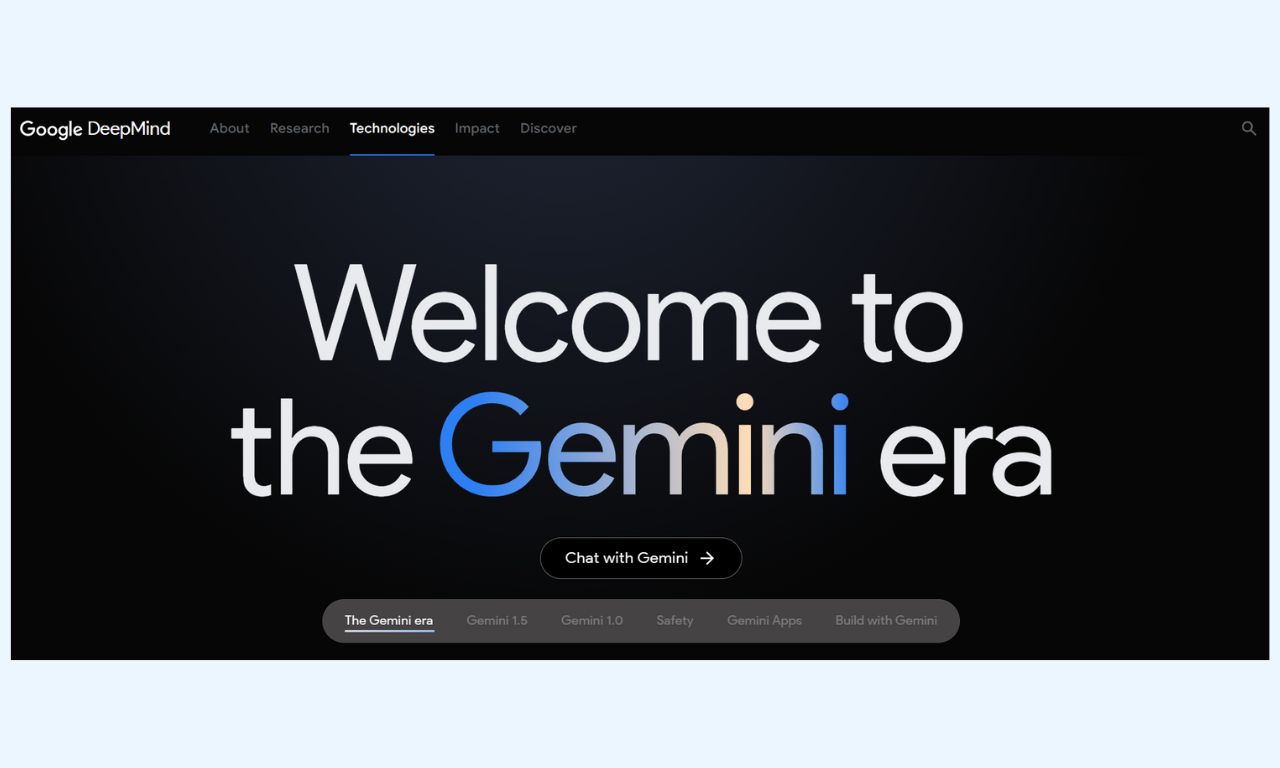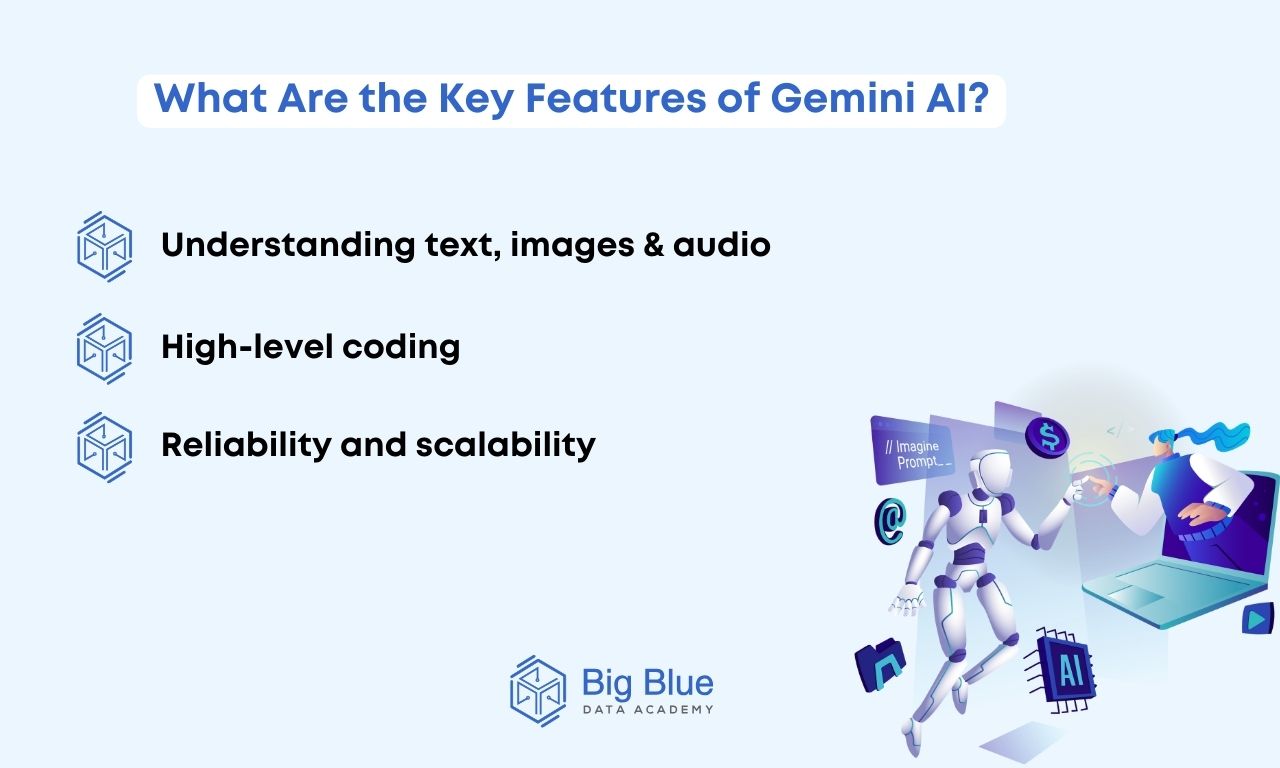Gemini AI: Google's New AI Model (2024 Guide)
The introduction of Gemini AI marks a new era for the development and further evolution of artificial intelligence, significantly improving the way data scientists and enterprise customers scale and leverage the capabilities of artificial intelligence.
Gemini AI was designed to be inherently multimodal and is part of a broader effort to develop tools and models that are fully aligned with Google's AI principles.
So in today's guide, we will see:
- What is Gemini AI?
- What advantages and possibilities does it offer?
- How it differs from GPT-4
Before we dive in, let's start with a basic definition.
What Is Gemini AI?
Gemini AI is a powerful artificial intelligence (AI) model developed by Google DeepMind, capable of performing complex tasks and producing high-quality code in various programming languages.
Formerly called Bard, it has the ability to simulate human conversations using natural language processing (NLP) and machine learning.

In addition, it can understand and recognize images and analyze complex graphs.
Gemini was designed to be inherently multimodal and was later further enhanced with additional multimodal data.
The model is optimized for Ultra, Pro, and Nano sizes, covering a variety of needs and environments.
Additionally, developers can use Gemini through API calls, either using the Google AI API or the Vertex AI API.
After exploring some important things about Gemini AI, let's take a closer look at what features and advantages it offers.
What Are the Key Features of Gemini AI?
Gemini AI is an extremely capable AI model that outperforms even professional experts in Massive Multitask Language Understanding (MMLU), a method applied to test the knowledge and problem-solving abilities of AI models.
Below we have gathered some of the key features and capabilities of Gemini AI which include the following:

Understanding text, images & audio
Gemini AI is an example of multimodal AI, where different types of data are fused with multiple algorithms to achieve higher performance.
Users can input images, audio, text, and other types of data, resulting in more natural AI interactions.
High-level coding
Gemini AI was trained on a huge data set, has access to up-to-date information, and provides accurate and reliable answers to a user's queries.
Gemini 1.0 can understand, explain, and generate high-quality code in popular programming languages such as Python, Java, C++, and Go.
Reliability and scalability
Gemini is estimated to be up to five times more powerful than GPT-4.
In fact, due to its fast processing, it can and does perform many tasks and requests at the same time.
So we understand that Gemini AI has a lot of potential.
But how does it differ from the equally popular LLM (large language model) GPT-4?
Gemini AI vs GPT 4: Which Is Better?
Gemini and GPT-4 are both popular and powerful AI models, with outstanding progress in natural language processing and production.
Both models can interact with and interpret text, image, video, audio, and code data, allowing users to tap into their range of capabilities.
Of course, if we look at them from a comparison perspective, although both models can be scaled with additional extensions, Google's Gemini model is more limited.
In terms of response times to user requests, Gemini responds faster than GPT-4, which can occasionally slow down or even stop altogether due to the sheer volume of users on the platform.
When it comes to generating up-to-date and accurate content, Gemini has an edge due to its access to the entire web, unlike GPT-4, which is limited to OpenAI training data.
In a Nutshell
We talked in detail about Gemini AI, the advantages it offers, and how it differs from the GPT-4 model.
In summary, both Gemini AI and GPT-4 have their own advantages and capabilities, so the choice is based on the needs of each user.
So if you're involved in this subject and want to enrich your knowledge, read more related articles on our blog!

.jpg)
.jpg)